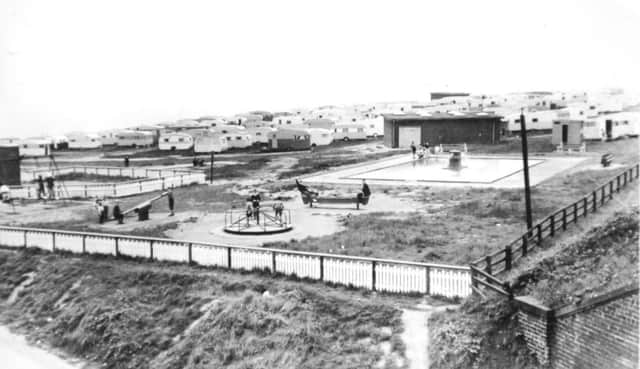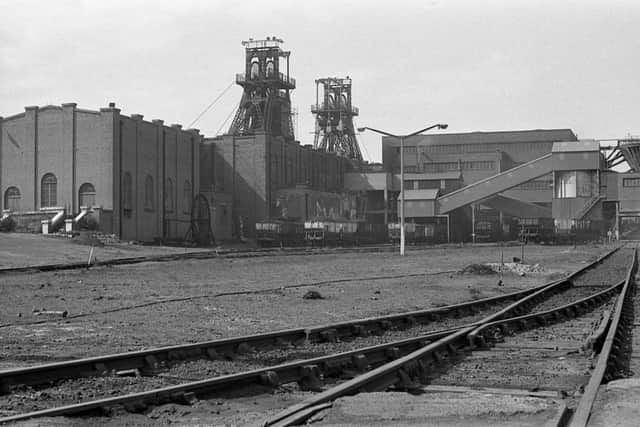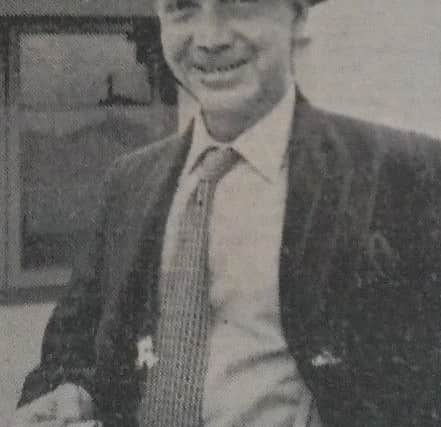Song and dance man Gilbert was a brave Somme survivor


In 1956, the Sunderland man gave an interview to the press when he was the entertainments manager at Crimdon Dene.
It was the ideal job for him as he’d had a love of the stage for decades, along with the pal who had been there for him so often in life, Ernest Featonby.


Advertisement
Hide AdAdvertisement
Hide AdBut behind it all for worldwise Gilbert was a tale of a man who’d had it tough. A man who overcame the odds on more than one occasion.
A man who went from pit to pit, a man who never settled in his younger days, and a man who fought in one of the great battles of the First World War.
Whitburn-born Gilbert lived his early life in Crook, before leaving school at 13 to become a grocer’s assistant.
But his relatives were all pitmen and he soon followed the same path when he joined his dad at Bearpark Colliery, starting as a trapper.


Advertisement
Hide AdAdvertisement
Hide AdIt didn’t suit him and by the time he was 21, he had worked at five different mines.
He told the Echo’s sister paper the Northern Daily Mail in 1956: “Money was hard to come by on those days and you worked in the pit where you could get the most.”
But he wanted more than the meagre wage he was earning at the time. He moved on to Benfield where he hoped to become a putter. Fate intervened and the colliery flooded while he was there.
There were no casualties but part of the mine had to be sealed off and Gilbert was one of the men to be made redundant. He moved to Easington Colliery where he got the job he wanted as a putter.


Advertisement
Hide AdAdvertisement
Hide AdIt was better conditions and more money - and there was an added bonus.
He met Ernest Featonby, another putter. The significance was huge.
They became lifelong friends and teamed up as a song and dance act. They were soon getting engagements at local concerts.
But just as life was looking good, the world went to war. The best pals volunteered and joined the Royal Field Artillery.


Advertisement
Hide AdAdvertisement
Hide AdThey were attached to the same battery and were both promoted to corporal.
On July 2, 1916, their battery engaged the enemy at the Battle of the Somme. It dragged on for months but that October, Cpl Oliver was in his gun pit when it was hit by a German shell. His leg was badly wounded.
The next few months were a constant round of lengthy stays in French and British hospitals before he finally recovered and went home to Easington to look for work.
Trouble was, there was none for him, mainly because of his disability.
Advertisement
Hide AdAdvertisement
Hide Adhe said at the time: “No-one wanted disabled men; they were considered to be a nuisance.
“That was the hardest blow of all, to think that no-one would give me a job because I had lost a leg.”
But eventually, his luck changed once more and fresh employment brough an added bonus.
After months of searching, he got a job in the miners’ lamp cabin at Easington pit. And when he turned up for work, to his amazement, his old mate Ernest Featonby was already working there.
Advertisement
Hide AdAdvertisement
Hide AdThey teamed up once more to form a new act called The Oliver Brothers.
The report at the time said: “It proved very successful and, during the last war, they entertained troops at camps throughout Durham and Northumberland.
“Often, they were detained at camps by air raids until the early hours of the morning.”
But all good things must come to an end.
Gilbert left Easington pit in 1941 when he joined Easington Rural District Council. He stayed in the clerks department as a clerical assistant for five years.
Advertisement
Hide AdAdvertisement
Hide AdHe left there when a job came up as entertainments manager at Crimdon Dene, in a post that was temporary at first.
When the permanent position was advertised, he won that post ahead of 95 others who applied for the job. It was dogged determination at its best.
Gilbert married his wife Margaret in July 1920. They met in Easington and married in Easington Village. They had one daughter Peggy who became a pharmacist.
Who remembers the man who served his country, lost a leg in the most brutal battle of them all, and came home to became a song and dance man once more?
If you do, contact [email protected]